This story appeared in The Toiler Times, the student newspaper of Manual Arts High School.
By Jovana Urrutia
The debate team is one of the most hard working and dedicated teams we have here at Manual Arts. The team’s advisor, Mr. Rohoman, works to help each team member.
The teams consist of two members per group and there are about twelve groups total in the debate team. They started to compete in December 2010 and since then they have been unstoppable.
They have won many competitions but the most challenging one was at Pepperdine University back in January. Other schools participated in the Pepperdine competition as well. All the team members had a rough start but they stayed calm and did their best.
I had the chance to interview one of the team members of the debate team. Her name is Alejandra Alvarez, a junior on the C-track. She told me that they went through obstacles to get to where they are now.
I asked if anyone felt nervous and what are their goals for the team. Alejandra said, “Yes some were nervous and the most important goal is to win every competition.” Every team member puts in a lot of effort. They get busy with it and they have every detail on their mind. That’s how much potential the team has.
The last question I asked was, “What is the next step for the team?” Her response: “For the team and expand get and more people involved, to learn more about it, get prepared for college and their future, and to win.”
The last thing she told me is that it’s not always about winning, it’s about having fun as well as enjoying every moment of the competition. The Toilers’ debate team will always have fun and they are not going to let anyone from other schools bring them down because they always keep their heads held high and they are motivated.









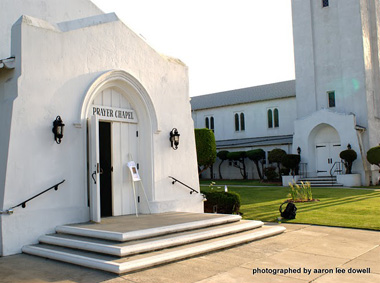 Congregants of Zion Hill Baptist Church in South Los Angeles probably thought Pastor Seth Pickens was certifiable when he proposed a community dialogue with the L.A. Black Skeptics Group. Founded in March of last year, the group provides a safe real time space for atheists, agnostics, freethinkers, humanists, and skeptics of African descent. As the group’s organizer, I had been in conversation with Seth about a forum for several months after interviewing him for my new book Moral Combat. A thirty-something, literary Morehouse College graduate from the East Coast, he was open to the idea of an “interfaith” dialogue from the beginning. As the pastor of Zion Hill since 2009, he seemed deeply concerned about the ongoing national critique of the Black Church’s waning influence (see, for example, Princeton religion professor Eddie Glaude’s widely circulated Huffington Post piece “The Black Church is Dead.”).
Congregants of Zion Hill Baptist Church in South Los Angeles probably thought Pastor Seth Pickens was certifiable when he proposed a community dialogue with the L.A. Black Skeptics Group. Founded in March of last year, the group provides a safe real time space for atheists, agnostics, freethinkers, humanists, and skeptics of African descent. As the group’s organizer, I had been in conversation with Seth about a forum for several months after interviewing him for my new book Moral Combat. A thirty-something, literary Morehouse College graduate from the East Coast, he was open to the idea of an “interfaith” dialogue from the beginning. As the pastor of Zion Hill since 2009, he seemed deeply concerned about the ongoing national critique of the Black Church’s waning influence (see, for example, Princeton religion professor Eddie Glaude’s widely circulated Huffington Post piece “The Black Church is Dead.”).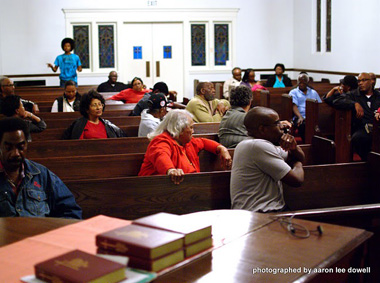 However, analysis of 21st century black religiosity should be situated within the context of deepening social, political, and economic crisis. Faced with double digit unemployment and skyrocketing rates of homelessness, the American dream is even more of a brutal sham for African Americans. In the wake of Obama’s election it is no accident that reactionary forces seek to dismantle what little remains of the American social welfare safety net. Indeed, the decades’ long Religious Right backlash against civil rights, women’s rights, and gay liberation is exemplified by the ascent of Tea Party-style white nationalism. Consequently, to paraphrase panelist Carol Pierce, the Black Church is still something of a “refuge” in a hyper-segregated nation.
However, analysis of 21st century black religiosity should be situated within the context of deepening social, political, and economic crisis. Faced with double digit unemployment and skyrocketing rates of homelessness, the American dream is even more of a brutal sham for African Americans. In the wake of Obama’s election it is no accident that reactionary forces seek to dismantle what little remains of the American social welfare safety net. Indeed, the decades’ long Religious Right backlash against civil rights, women’s rights, and gay liberation is exemplified by the ascent of Tea Party-style white nationalism. Consequently, to paraphrase panelist Carol Pierce, the Black Church is still something of a “refuge” in a hyper-segregated nation. In response, one audience member complained that it was easy to “poke holes” in scripture and Christian belief. But at the end of the day you had to believe in something. Secular humanists believe that faith in supernatural puppet masters are dangerous because we only have one life to live. Feminist atheists believe that social justice based on the universal moral value of women’s right to self-determination (rather than self-sacrifice, domestication, submission, and sexual degradation) is certainly not found in the Bible or the Koran. It is for this reason that the heterosexist, patriarchal hierarchies of Abrahamic religions are especially insidious for black women and LGBT people of African descent.
In response, one audience member complained that it was easy to “poke holes” in scripture and Christian belief. But at the end of the day you had to believe in something. Secular humanists believe that faith in supernatural puppet masters are dangerous because we only have one life to live. Feminist atheists believe that social justice based on the universal moral value of women’s right to self-determination (rather than self-sacrifice, domestication, submission, and sexual degradation) is certainly not found in the Bible or the Koran. It is for this reason that the heterosexist, patriarchal hierarchies of Abrahamic religions are especially insidious for black women and LGBT people of African descent.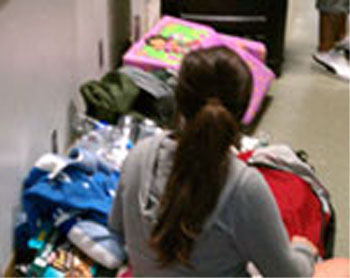 Sleeping bags and boxes of food lined the halls of the administration building at CSU Fullerton on Thursday. However, students weren’t preparing for the outdoors. They were protesting budget cuts and tuition hikes to raise awareness for the issue.
Sleeping bags and boxes of food lined the halls of the administration building at CSU Fullerton on Thursday. However, students weren’t preparing for the outdoors. They were protesting budget cuts and tuition hikes to raise awareness for the issue. The Chevy Volt and the Nissan Leaf, the first all-electric vehicles to hit the market, went on sale this past December. The Mayor Antonio Villaraigosa and the Department of Water and Power are invested in helping these cars catch on. Today, they launched Charge Up LA. It’s a rebate program that will give electric car owners up to $2,000 toward the installation and cost of their in-home charger.
The Chevy Volt and the Nissan Leaf, the first all-electric vehicles to hit the market, went on sale this past December. The Mayor Antonio Villaraigosa and the Department of Water and Power are invested in helping these cars catch on. Today, they launched Charge Up LA. It’s a rebate program that will give electric car owners up to $2,000 toward the installation and cost of their in-home charger.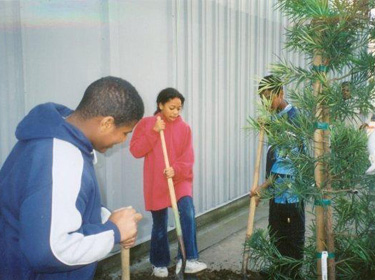 Southwest has evolved since 1967 from a campus of bungalows that served as classrooms to state-of-the-art buildings that are certified by the United States Green Building Council’s Leadership in Energy and Environmental Design (LEED), says the Los Angeles Community College District (LACCD) district. Southwest is one of nine colleges that make up the district. The funds for the new buildings come from the $6 billion district construction program approved by Los Angeles voters.
Southwest has evolved since 1967 from a campus of bungalows that served as classrooms to state-of-the-art buildings that are certified by the United States Green Building Council’s Leadership in Energy and Environmental Design (LEED), says the Los Angeles Community College District (LACCD) district. Southwest is one of nine colleges that make up the district. The funds for the new buildings come from the $6 billion district construction program approved by Los Angeles voters.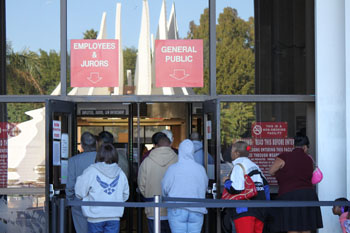
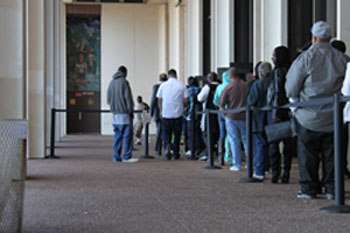 “If you want a trial, he continued, “you have to pay the ticket first, and if you don’t have the money, the judge doesn’t care.”
“If you want a trial, he continued, “you have to pay the ticket first, and if you don’t have the money, the judge doesn’t care.” Instead of getting food and money, the homeless women of Southern California are getting makeovers.
Instead of getting food and money, the homeless women of Southern California are getting makeovers. 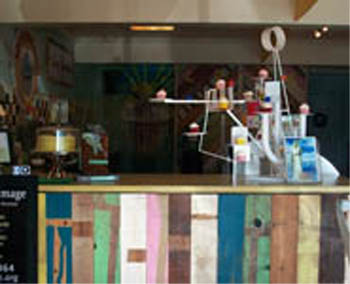 When you walk through the doors at Lucy Florence Cultural Center, you are taken aback by the bright colors and elegant decorations. There’s a coffee bar to grab a bite to eat. The hallway leads to hidden rooms filled with artistic treasures. There’s even a room with a stage, piano and rows of seats to put on a good show.
When you walk through the doors at Lucy Florence Cultural Center, you are taken aback by the bright colors and elegant decorations. There’s a coffee bar to grab a bite to eat. The hallway leads to hidden rooms filled with artistic treasures. There’s even a room with a stage, piano and rows of seats to put on a good show.  We are in a season of resurrection. The photo was taken on Easter 1961; a past season of resurrection. We stood before our twin sisters with no knowledge of the many rebirths we would experience during this lifetime. We were young, protected, loved and unafraid. We stood before our twin sisters knowing nothing about the wonderful adventures in our future. That was 50 years ago. Today, we are living proof of the Divine MotherFatherGod and the spirit of resurrection. We embrace countless lessons about life, death, fear and achievement along the way. We are boys, students, men, teachers, retail buyers, managers, dancers, coaches, designers, owners and creators. We’ve died and been reborn so many times we’ve lost count of our birthdays! This is a season of resurrection; but is it our season of resurrection?
We are in a season of resurrection. The photo was taken on Easter 1961; a past season of resurrection. We stood before our twin sisters with no knowledge of the many rebirths we would experience during this lifetime. We were young, protected, loved and unafraid. We stood before our twin sisters knowing nothing about the wonderful adventures in our future. That was 50 years ago. Today, we are living proof of the Divine MotherFatherGod and the spirit of resurrection. We embrace countless lessons about life, death, fear and achievement along the way. We are boys, students, men, teachers, retail buyers, managers, dancers, coaches, designers, owners and creators. We’ve died and been reborn so many times we’ve lost count of our birthdays! This is a season of resurrection; but is it our season of resurrection?





